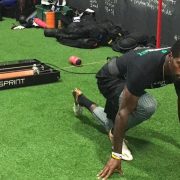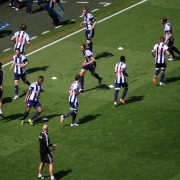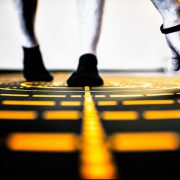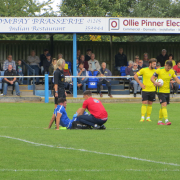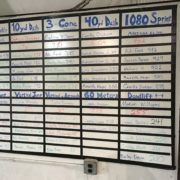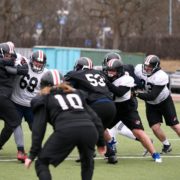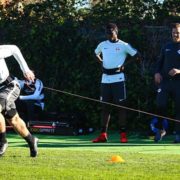Northampton Town FC lead physiotherapist Anders Braastad individually profiles the Cobblers’ movement patterns as part of pre-season assessments using the 1080 Map.
Anders Braastad studied with 1080 MAP founder Ola Eriksrud, and brought the 1080 MAP with him to Northampton Town. Braastad modified the protocol to complete a player’s assessment in about 20 minutes. This enabled him to gain a quantitative insight on the Cobblers’ movements over the course of one day of pre-season. He also records the test so he and the staff can note the quality of movement, relate that to what they see on the pitch and look for changes over the season.
Based on the assessment, Braastad assigns each player three corrective exercises to improve the quality and range of movement. “It is important to not over-complicate things. We have one physio, one sport scientist and 24 players. Based on the screening we give them three exercises and it’s their individual responsibility to work on these things.
“For instance, we might have players doing ankle mobility exercises in more than one plane of movement. We might also find that their balance significantly changes when they change their foot position, or whether it’s different in extension or flexion patterns.”
RESEARCH: Reliability and Validity of the Hand Reach Star Excursion Balance Test
Because of the demands of the first team’s schedule, Anders Braastad uses the 1080 MAP primarily during the pre-season assessments. He has more opportunities, though, to study Northampton Town’s academy athletes. As he watched players at Northampton Town and elsewhere over the course of their careers, he has noted how movement patterns are stable in the absence of injury or intervention.
“More talented younger players are better at movement. A consistent movement profile can be seen into the 30s. So if you can identify movement patterns at an early age, maybe you can help him with his issues if you can work more with him.”
Braastad used the 1080 MAP in his BSc thesis to study the relationship between posterior reach and kicking power. The P180 protocol separates the hip from the contralateral shoulder. This tests a footballer’s ability to create a tension arc across the body, leading to increased kicking power.
He found a significant relationship between kicking power and the Star Excursion Balance Test in the posterior direction, and a moderate relationship between kicking power and the 1080 MAP’s P180 protocol on the dominant leg.
The small sample size and the scope of the project limited Braastad’s ability to draw firm conclusions about the relationship between posterior reach and kicking power. He hopes to revisit the research to compare how posterior reaching in the transverse plane versus the sagittal plane effects kicking power.

